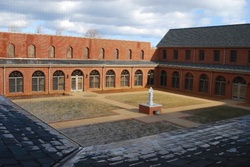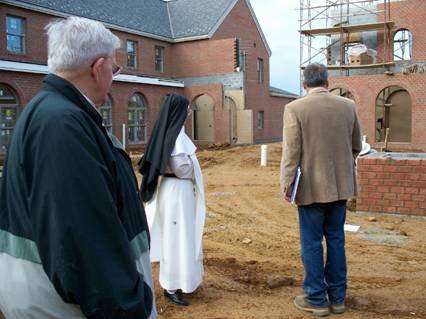 You may have seen the story of 10 nuns come into full communion with the Catholic Church. The ceremonial aspect of full communion was yesterday but the journey to that point was long in coming individually and corporately. Archbishop Edwin O’Brien of Baltimore received the nuns and is working with them to become a diocesan right community.
You may have seen the story of 10 nuns come into full communion with the Catholic Church. The ceremonial aspect of full communion was yesterday but the journey to that point was long in coming individually and corporately. Archbishop Edwin O’Brien of Baltimore received the nuns and is working with them to become a diocesan right community.
Tag: nun
Visiting Bethlehem: the Abbey of Regina Laudis
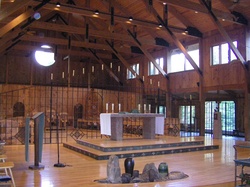 One of the blessings in Connecticut is the presence of Abbey of Regina Laudis, a monastery of nearly 40 Benedictine nuns in the hills of Litchfield, County (in the Archdiocese of Hartford). Looking out in the choir there were 5 white veil novices and 1 postulant among the other professed nuns.
One of the blessings in Connecticut is the presence of Abbey of Regina Laudis, a monastery of nearly 40 Benedictine nuns in the hills of Litchfield, County (in the Archdiocese of Hartford). Looking out in the choir there were 5 white veil novices and 1 postulant among the other professed nuns.
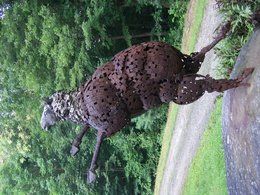 Additionally, the abbey has through the years attracted women from all walks of life and pedigree: some have been lawyers, physicians, artists, poets, actresses, theologians, minor nobility and the like. Mother Foundress’ leadership and vision was the result of the integration of faith and reason. She knew deeply the Catholic tradition of the religious, artistic and intellectual life. Hers was a monastic life that is virtually unknown in the United States. Regina Laudis is likely one of 4 or 5 similar monasteries of women. Historically, Mother Benedict knew personally Popes Pius XII, John XXIII and Paul VI and all of them encouraged the Foundress to keep alive Benedictine culture, ecumenism, the Latin chants and the intellect (that is, if a woman came to the abbey is a professional credential, or later earned one, she was keep current in that field).
Additionally, the abbey has through the years attracted women from all walks of life and pedigree: some have been lawyers, physicians, artists, poets, actresses, theologians, minor nobility and the like. Mother Foundress’ leadership and vision was the result of the integration of faith and reason. She knew deeply the Catholic tradition of the religious, artistic and intellectual life. Hers was a monastic life that is virtually unknown in the United States. Regina Laudis is likely one of 4 or 5 similar monasteries of women. Historically, Mother Benedict knew personally Popes Pius XII, John XXIII and Paul VI and all of them encouraged the Foundress to keep alive Benedictine culture, ecumenism, the Latin chants and the intellect (that is, if a woman came to the abbey is a professional credential, or later earned one, she was keep current in that field).St Dominic’s Monastery: 1st anniv in Linden, VA
Today, June 24, is the first anniversary of the dedication of Saint Dominic’s
Monastery new monastery in Linden, Virginia.
What an amazing year!
This summer four young women will enter the Monastery as postulants. As
envisioned, the Monastery is acting as a magnet attracting young women to
devote their lives to God. The life follows the traditional form of Second Order Dominican nuns with the night Office, the grill, silence, sacrifice and prayer. The nuns rarely leave the cloister and are completely focussed on Christ.
I would like to encourage everyone to send Sister Mary Paul (the
prioress) and the nuns at Saint Dominic’s Monastery an anniversary card and, if
possible, to include an anniversary gift – a check to support the formation of
their new members.
Cards can be mailed to:
Sister Mary Paul, O.P.
Saint Dominic’s Monastery
2636 Monastery Road
Linden, VA 22642
My friends Fathers Gabriel and Jordan as well as the laywoman Julie tell me the life of the monastery is going extremely well and the need for assistance is also great. So, I think the life of these Dominican nuns is VERY worth a sacrificial gift. Don’t you?
Our Lady of Grace Monastery observes 62 years of monastic life in North Guilford
Today is the 62nd anniversary of the monastic foundation of Our Lady of Grace Monastery in North Guilford, Connecticut. Faithfilled nuns made the journey from a Dominican nun’s monastery in Summit, New Jersey to a suburb of New Haven in 1947 to spend their lives for the Gospel and the Church.
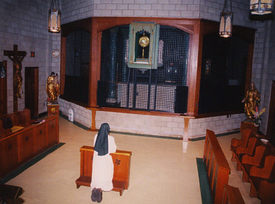 Nearly 40 nuns of the Order Preachers live in a papal enclosure offering sacrifices and prayers for our salvation; they study and work for the up-building of the Kingdom of God. The nuns follow the charism of Saint Dominic as it is lived today within the Dominican Order which says that “there is indeed a diversity of gifts, but one and the same Spirit, one charity, one mercy. The friars, sisters and laity of the Dominican Order are to preach the name of Our Lord Jesus Christ throughout the world; the nuns are to seek, ponder and call upon him in solitude so that the Word proceeding from the mouth of God may not return to him empty, but may accomplish those things for which it was sent.” (From the Fundamental Constitutions of the Nuns)
Nearly 40 nuns of the Order Preachers live in a papal enclosure offering sacrifices and prayers for our salvation; they study and work for the up-building of the Kingdom of God. The nuns follow the charism of Saint Dominic as it is lived today within the Dominican Order which says that “there is indeed a diversity of gifts, but one and the same Spirit, one charity, one mercy. The friars, sisters and laity of the Dominican Order are to preach the name of Our Lord Jesus Christ throughout the world; the nuns are to seek, ponder and call upon him in solitude so that the Word proceeding from the mouth of God may not return to him empty, but may accomplish those things for which it was sent.” (From the Fundamental Constitutions of the Nuns)
I am grateful for the presence of the monastery because it has offered me a place to pray, that is, to enjoy the friendship of Jesus and His Mother, Mary. Nuns have perpetual adoration before the Blessed Sacrament open their chapel to countless visitors who want to do the same; there is a possibility of making other spiritual exercises like the Stations of the Cross. The nuns support themselves entirely on the donations they receive and the income from a modest bookstore.
The context of Our Lady of Grace Monastery is in the Archdiocese of Hartford, 15 miles from New Haven and priests from the Dominican Priory of Saint Mary’s, New Haven.
 The value of prayer and sacrifice was learned early in my life through the nuns of this monastery. Now with the Lord, Sisters Mary Dominic and Veronica used to sit with me talk about life and God. Over the years I made a regular pilgrimage (really a short trip from my parents’ home 12 miles away) to the monastery because it was interesting, even mysterious. How many places do you that beckon you to know Christ? As a teenager I would ride my bicycle to the North Guilford monastery to serve the Sunday Mass celebrated by Father Luke and then ride all the way home again. I count on the witness of these nuns because I trust it. Our Lady of Grace Monastery is not sentimental; it’s not fake, it’s not transient; the lives of the witnesses are rooted in Jesus Christ. Would that all of us could say the same. Would that the witness of these nuns could rub off more so that we could give be the face of Christ in the world.
The value of prayer and sacrifice was learned early in my life through the nuns of this monastery. Now with the Lord, Sisters Mary Dominic and Veronica used to sit with me talk about life and God. Over the years I made a regular pilgrimage (really a short trip from my parents’ home 12 miles away) to the monastery because it was interesting, even mysterious. How many places do you that beckon you to know Christ? As a teenager I would ride my bicycle to the North Guilford monastery to serve the Sunday Mass celebrated by Father Luke and then ride all the way home again. I count on the witness of these nuns because I trust it. Our Lady of Grace Monastery is not sentimental; it’s not fake, it’s not transient; the lives of the witnesses are rooted in Jesus Christ. Would that all of us could say the same. Would that the witness of these nuns could rub off more so that we could give be the face of Christ in the world.
Our Lady of Grace Monastery
11 Race Hill Road
North Guilford, CT 06437-1099
(203) 457-0599
Saint Walburga’s Abbey: Sisters in Solitude
Nuns find peace on a farm near Virginia Dale. They tend to gardens, they do maintenance, they even herd cattle. But most of all, they pray.
By Erin Frustaci
Fort Collines Now
About 35 miles northwest of Fort Collins, life is quiet, peaceful and contemplative–a
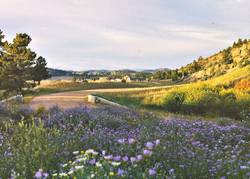 contrast from the fast-paced consumer-driven lifestyle found in other parts of the world. Tucked among rocky foothills and fresh country air, the tiny town of Virginia Dale is all but forgotten.
contrast from the fast-paced consumer-driven lifestyle found in other parts of the world. Tucked among rocky foothills and fresh country air, the tiny town of Virginia Dale is all but forgotten.
And yet, there is a certain timelessness for those who call it home. The natural landscape, free of distractions, serves as the perfect backdrop for a community of about 20 Benedictine nuns of the Roman Catholic Church whose life work and mission is prayer.
“The focus is not on all life’s accessories, but on life itself,” Mother Maria-Michael Newe said.
Despite the complexity of the modern world where people are attached to their Blackberries, email and iPods, Maria-Michael believes there is still a need for simplicity and peacefulness in society.
“I think people are seeking this, they are just afraid of it,” she said. “They are so used to being busy that they are not used to sitting still in the quietness.”
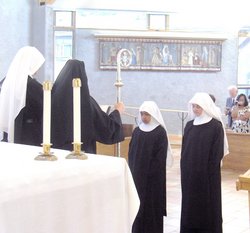 The nuns, who range from 23 to 93 years old and come from all over the world, build their days around the seven-day services which make up what is called the Divine Office or the Liturgy of the Hours. Maria-Michael said the premise is to be prepared at all times to praise God. And if the volume of mail, email and phone calls for prayer requests is any indication, their work is greatly appreciated.
The nuns, who range from 23 to 93 years old and come from all over the world, build their days around the seven-day services which make up what is called the Divine Office or the Liturgy of the Hours. Maria-Michael said the premise is to be prepared at all times to praise God. And if the volume of mail, email and phone calls for prayer requests is any indication, their work is greatly appreciated.
Throughout the day a chorus of voices chanting prayers can be heard from the chapel. At other times the stillness and deep quietness reverberates all around. Then there are also more unconventional sounds of the Abbey: An 89-year old nun weeding her flower gardens, an industrial mixer blending cookie dough for fresh homemade cookies, a green Gator’s engine starting as three young nuns prepare to heard cattle to a different barn.
The nuns work within the monastery and valley to support themselves. They divide up daily housekeeping tasks including cooking, cleaning, laundry and maintenance, as well as operate a gift shop that sells religious books and handmade cards and craft items. They also run a small online altar bread distributing business.
As a cloistered community, they only go outside for necessary business purposes such as grocery shopping or doctor appointments. Tuesdays are usually the days when select nuns make a trip down to Fort Collins to run errands.
“Work is a blessing,” Newe said. “It’s such a joy when you can bring home the gifts of God and help sustain the table.”
Following in the footsteps of their pioneer sisters, the nuns also are active ranchers. They run a herd of beef cattle, grow hay, collect eggs from the chickens, milk the cows and tend to the vegetable gardens.
The Abbey of St. Walburga relocated to Virginia Dale in 1997 after outgrowing its former location in Boulder. When the abbey first came to Boulder in the 1930s, the area was spacious and open. But as the city built out with busy highways and new subdivisions, an expansion of the abbey became problematic. The nuns spent several years looking for a new home. A Denver businessman and his wife eventually donated the land in Virginia Dale to them.
It’s a much different way of life, but one that is rewarding for those who are meant to live it, the nuns said. Contrary to misconceptions and pop-culture movies like Sister Act, Newe said the community is not a shelter for people who are running away from their problems. In fact, she said the women who join monasteries do it because they are called in that direction.
“You have to be mature enough to live in a community and yet be alone,” Newe said.
A typical day begins promptly at 4:50 a.m. with Matins, or vigils. More prayer sessions, including Lauds, follow. From 9-11:30 a.m. the women are dispersed throughout the property for the first work session of the day.
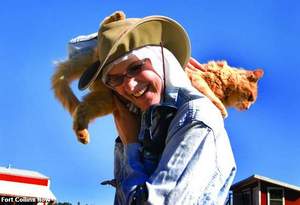 Many of them change into denim overalls to work on the farm, though they still wear the traditional veils. On Tuesday this week Sister Maria Gertrude Read, 23, and Sister Maria Josepha Hombrebueno, 30, spent the morning painting the fence by the farm a vivid red. The fall is busy time for maintenance in preparation for winter.
Many of them change into denim overalls to work on the farm, though they still wear the traditional veils. On Tuesday this week Sister Maria Gertrude Read, 23, and Sister Maria Josepha Hombrebueno, 30, spent the morning painting the fence by the farm a vivid red. The fall is busy time for maintenance in preparation for winter.
“We’ve been painting it bit by bit,” Read said. “We’ve been doing it for a couple weeks.”
Read just made her temporary vows two weeks ago. She has been in the Abbey for three years.
“I felt called to some kind of religious life,” she said.
She grew up in Boulder and was raised Catholic. However, she said it wasn’t as meaningful to her when she was younger. When she was 14 years old, she had a specific experience while at a church summer camp when she knew she wanted to become a nun. Before that, she said she had pictured nuns as scary.
“It was this push,” she said. “It was a transforming moment. My whole life changed after that.”
She began looking at different monasteries and then decided to look closer to home. She admits that she could have gotten married and had a “normal job,” but it wouldn’t have been the same.
“I don’t think it’s fair to say I wouldn’t have been happy somewhere else, but I wouldn’t have had the same fullness and joy.”
At 11:30 a.m. Sister Maria Gertrude and Sister Maria Josepha quickly cleaned up from their painting project and slipped back into their black habits, the traditional religious costumes or robes. After another prayer session in the chapel, the nuns gather for their formal meal at noon.
“When you live in a community, you really have to serve each other. You have t,” Newe said.
During that time, scripture is also read aloud. After the meal, the nuns have quiet time, where they can rest, go for a walk or spend private time praying. The afternoon is dedicated to classes for the younger women and another session of work before afternoon and evening prayers.
Most women begin their quest by visiting a monastery. Once they decide it is something they want to pursue, they become a candidate for about the first three months. After that, she will receive a postulant veil and remain a postulant for about nine months. During that time, the woman studies the Benedictine rule, traditions and ways of prayer. From there, she will become a novice for two years. At the end of that period she will make her first vows of obedience, stability and fidelity to the monastic life. After another three years, she will make her solemn perpetual vows.
Sister Raisa Avila, 22, is in the earlier stages of discernment, having only been at the abbey for about a year. She is a postulant.
“It’s a lifelong commitment, so you want to make sure,” she said.
Avila is originally from Vancouver, B.C., in Canada. She was born and raised catholic but didn’t take it seriously until she was faced with challenges. She was in school and had a different life, but she knew there was more out there for her.
“My love for God drew me here,” she said.
She attended a monastic living weekend at an abbey in Canada and was hooked. But Avila admits the path wasn’t always smooth. The transition into the lifestyle at the abbey has been challenging, Avila admits.
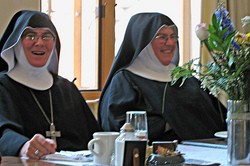 “I’m still human,” she said. “I cried when I left home. I missed my family, but at the same time, you have to make sacrifices.”
“I’m still human,” she said. “I cried when I left home. I missed my family, but at the same time, you have to make sacrifices.”
She said God has brought her through the tough times. She said she eagerly looks forward to the next stages of the process. Avila has also learned more about farming than she could have ever imagined. Though she did not grow up on a farm, she now greets the cows and llamas as if it were second nature.
During her afternoon work last Tuesday, she helped two other sisters heard the cattle to get them ready to be sold in an auction in Centennial. With a smile on her face, she then headed back into the chapel.
The abbey has become a place for prayer for the nuns as well as volunteers and people outside of the community.
“Our place really is a house of prayer. You don’t have to be catholic to pray here,” Mother Maria-Michael Newe said.
And while there are areas of the abbey that are cloistered such as the dining and living quarters, the public is invited to visit much of the property. In fact, the nuns run a retreat house on the property where groups and individuals can spend some time away for a set fee. The retreat house, which can fit about 23 people, is designed to offer quiet withdrawal from the busy noise of the ordinary home and work world.
Newe said prayer can be a hefty job at times, but it is also extremely rewarding. She said she often receives prayer requests for troubled relationships, illnesses and financial struggles. She is happy to take the requests because she said it is part of her duty.
“Somewhere in the world someone is needing that prayer,” Newe said. “And we take them and their cause to heart. It’s a work of love.”
Pope Benedict address priests, nuns, sisters & consecrated men & women
 Address of the Holy Father Benedict XVI
Address of the Holy Father Benedict XVI
To the Participants in the
Plenary Assembly of the Congregation
For Institutes of Consecrated Life
And Societies of Apostolic Life
Clementine Hall
Thursday, 20 November 2008
Your Eminences,
Venerable Brothers in the Episcopate and in the Priesthood,
Dear Brothers and Sisters,
I meet you with joy on the occasion of the Plenary Assembly of the Congregation for Institutes of Consecrated Life and Societies of Apostolic Life which is celebrating 100 years of life and activity. Indeed, a century has passed since my venerable Predecessor, St Pius X, with his Apostolic Constitution Sapienti Consilio of 29 June 1908, made your Dicastery autonomous as a Congregatio negotiis religiosorum sodalium praeposita, a name that has subsequently been modified several times. To commemorate this event you have planned a Congress on the coming 22 November with the significant title: “A hundred years at the service of the consecrated life”. Thus, I wish this appropriate initiative every success.
Today’s meeting is a particularly favourable opportunity for me to greet and thank all those who work in your Dicastery. I greet in the first place Cardinal Franc Rodé, the Prefect, to whom I am also grateful for expressing your common sentiments. Together with him I greet the Members of the Dicastery, the Secretary, the Undersecretaries and the other Officials who, with different tasks carry out their daily service with competence and wisdom in order to “promote and regulate” the practice of the evangelical counsels in the various forms of consecrated life, as well as the activity of the Societies of Apostolic Life (cf. Apostolic Constitution Pastor bonus, n. 105). Consecrated persons constitute a chosen portion of the People of God: to sustain them and to preserve their fidelity to the divine call, dear brothers and sisters, is your fundamental commitment which you carry out in accordance with thoroughly tested procedures thanks to the experience accumulated in the past 100 years of your activity. This service of the Congregation was even more assiduous in the decades following the Second Vatican Council that witnessed the effort for renewal, in both the lives and legislation of all the Religious and Secular Institutes and of the Societies of Apostolic Life. While I join you, therefore, in thanking God, the giver of every good, for the good fruits produced in these years by your Dicastery, I recall with grateful thoughts all those who in the course of the past century of its activity have spared no energy for the benefit of consecrated men and women.
This year the Plenary Assembly of your Congregation has focused on a topic particularly
 dear to me: monasticism, a forma vitae that has always been inspired by the nascent Church which was brought into being at Pentecost (Acts 2: 42-47; 4: 32-35). From the conclusions of your work that has focused especially on female monastic life useful indications can be drawn to those monks and nuns who “seek God”, carrying out their vocation for the good of the whole Church. Recently too (cf. Address to the world of culture, Paris, 12 September 2008), I desired to highlight the exemplarity of monastic life in history, stressing that its aim is at the same time both simple and essential: quaerere Deum, to seek God and to seek him through Jesus Christ who has revealed him (cf. Jn 1: 18), to seek him by fixing one’s gaze on the invisible realities that are eternal (cf. 2 Cor 4: 18), in the expectation of our Saviour’s appearing in glory (cf. Ti 2: 13).
dear to me: monasticism, a forma vitae that has always been inspired by the nascent Church which was brought into being at Pentecost (Acts 2: 42-47; 4: 32-35). From the conclusions of your work that has focused especially on female monastic life useful indications can be drawn to those monks and nuns who “seek God”, carrying out their vocation for the good of the whole Church. Recently too (cf. Address to the world of culture, Paris, 12 September 2008), I desired to highlight the exemplarity of monastic life in history, stressing that its aim is at the same time both simple and essential: quaerere Deum, to seek God and to seek him through Jesus Christ who has revealed him (cf. Jn 1: 18), to seek him by fixing one’s gaze on the invisible realities that are eternal (cf. 2 Cor 4: 18), in the expectation of our Saviour’s appearing in glory (cf. Ti 2: 13).
Christo omnino nihil praeponere [prefer nothing to Christ] (cf. Rule of Benedict 72, 11; Augustine, Enarr. in Ps 29: 9; Cyprian, Ad Fort 4). These words which the Rule of St Benedict takes from the previous tradition, clearly express the precious treasure of monastic life lived still today in both the Christian West and East. It is a pressing invitation to mould monastic life to the point of making it an evangelical memorial of the Church and, when it is authentically lived, “a reference point for all the baptized” (cf. John Paul II, Orientale lumen, n. 9). By virtue of the absolute primacy reserved for Christ, monasteries are called to be places in which room is made for the celebration of God’s glory, where the mysterious but real divine presence in the world is adored and praised, where one seeks to live the new commandment of love and mutual service, thus preparing for the final “revelation of the sons of God” (Rm 8: 19). When monks live the Gospel radically, when they dedicate themselves to integral contemplative life in profound spousal union with Christ, on whom this Congregation’s Instruction Verbi Sponsa (13 May 1999) extensively reflected, monasticism can constitute for all the forms of religious life and consecrated life a remembrance of what is essential and has primacy in the life of every baptized person: to seek Christ and put nothing before his love.
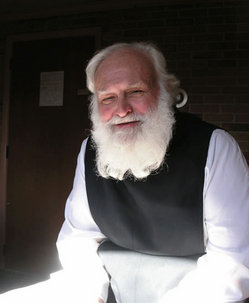 The path pointed out by God for this quest and for this love is his Word itself, who in the books of the Sacred Scriptures, offers himself abundantly, for the reflection of men and women. The desire for God and love of his Word are therefore reciprocally nourished and bring forth in monastic life the unsupressable need for the opus Dei, the studium orationis and lectio divina, which is listening to the Word of God, accompanied by the great voices of the tradition of the Fathers and Saints, and also prayer, guided and sustained by this Word. The recent General Assembly of the Synod of Bishops, celebrated in Rome last month on the theme: The Word of God in the life and mission of the Church, renewing the appeal to all Christians to root their life in listening to the Word of God contained in Sacred Scripture has especially invited religious communities to make the Word of God their daily food, in particular through the practice of lectio divina (cf. Elenchus praepositionum, n. 4).
The path pointed out by God for this quest and for this love is his Word itself, who in the books of the Sacred Scriptures, offers himself abundantly, for the reflection of men and women. The desire for God and love of his Word are therefore reciprocally nourished and bring forth in monastic life the unsupressable need for the opus Dei, the studium orationis and lectio divina, which is listening to the Word of God, accompanied by the great voices of the tradition of the Fathers and Saints, and also prayer, guided and sustained by this Word. The recent General Assembly of the Synod of Bishops, celebrated in Rome last month on the theme: The Word of God in the life and mission of the Church, renewing the appeal to all Christians to root their life in listening to the Word of God contained in Sacred Scripture has especially invited religious communities to make the Word of God their daily food, in particular through the practice of lectio divina (cf. Elenchus praepositionum, n. 4).
Dear brothers and sisters, those who enter the monastery seek there a spiritual oasis where they may learn to live as true disciples of Jesus in serene and persevering fraternal communion, welcoming possible guests as Christ himself (cf. Rule of Benedict, 53, 1). This is the witness that the Church asks of monasticism also in our time. Let us invoke Mary, Mother of the Lord, the “woman of listening”, who put
 nothing before love for the Son of God, born of her, so that she may help communities of consecrated life and, especially, monastic communities to be faithful to their vocation and mission. May monasteries always be oases of ascetic life, where fascination for the spousal union with Christ is sensed, and where the choice of the Absolute of God is enveloped in a constant atmosphere of silence and contemplation. As I assure you of my prayers for this, I cordially impart the Apostolic Blessing to all of you who are taking part in the Plenary Assembly, to all those who work in your Dicastery and to the members of the various Institutes of Consecrated Life, especially those that are entirely contemplative. May the Lord pour out an abundance of his comforts upon each one.
nothing before love for the Son of God, born of her, so that she may help communities of consecrated life and, especially, monastic communities to be faithful to their vocation and mission. May monasteries always be oases of ascetic life, where fascination for the spousal union with Christ is sensed, and where the choice of the Absolute of God is enveloped in a constant atmosphere of silence and contemplation. As I assure you of my prayers for this, I cordially impart the Apostolic Blessing to all of you who are taking part in the Plenary Assembly, to all those who work in your Dicastery and to the members of the various Institutes of Consecrated Life, especially those that are entirely contemplative. May the Lord pour out an abundance of his comforts upon each one.
Some data:
Currently, there are 12,876 monks living in 905 monasteries and 48,493 contemplative nuns living in 3,520 monasteries, two-thirds of which are found in Europe. Spain has, by far, the most of any country.
The story is carried here.
A new monastery of Dominican nuns: the witness
Saint Dominic’s Monastery is where a group of Dominican nuns –not to be confused with the
 third order sisters like Nashville Dominicans or Sisters of Mary, Mother of the Eucharist– are beginning a new life in Linden, Virginia, and they ought to be on your radar screen. The monastery is 12 miles from Christendom College and a short distance from Washington, DC.
third order sisters like Nashville Dominicans or Sisters of Mary, Mother of the Eucharist– are beginning a new life in Linden, Virginia, and they ought to be on your radar screen. The monastery is 12 miles from Christendom College and a short distance from Washington, DC.
The nuns need our prayerful solidarity, vocations and material support. What’s more beautiful than a life dedicated to following the Gospel of Jesus Christ in the charism of Saint Dominic by faithfulness to a life of sacrifice, worship, study and community life? The nuns live what is considered a traditional Dominican nuns’ life with the night office, the traditional habit, community life and abstinence. Their life is not easy but they it is beautiful, happy and rewarding. The monastery will be blessed (dedicated) and the nuns formally enclosed by the bishop of the Dicoese of Arlington, The Most Reverend Paul Stephen Loverdi on October 7, 2008, the feast of the Holy Rosary.
A great story of monastic adventure may be found at Roman Catholic Vocations blog.
